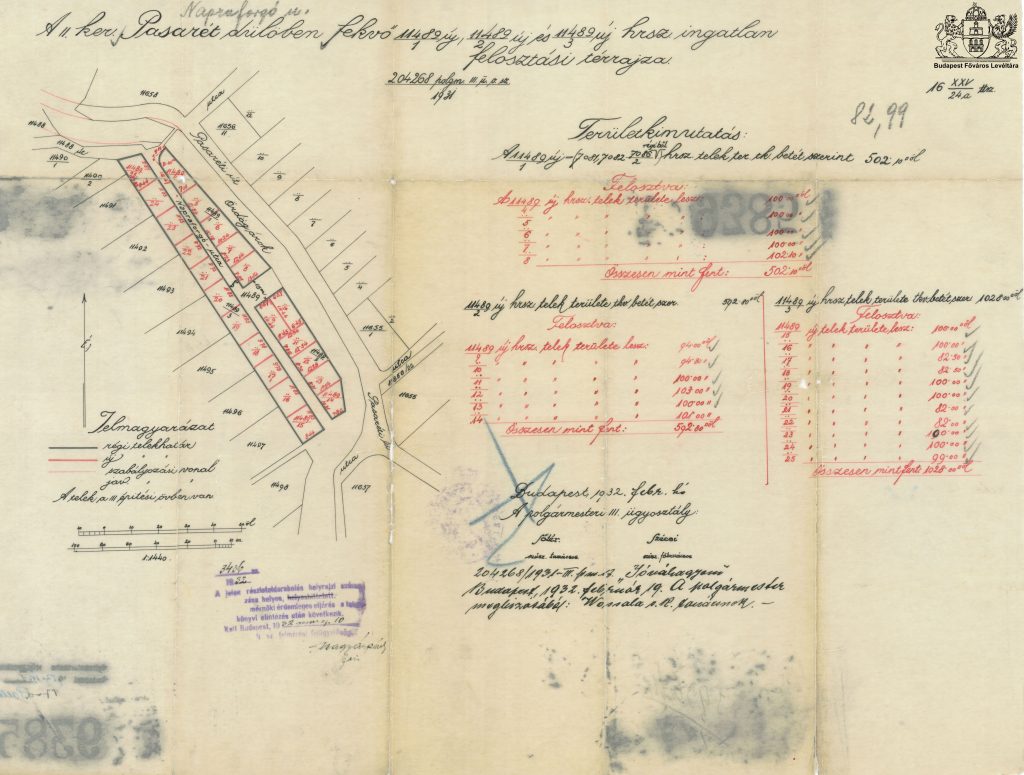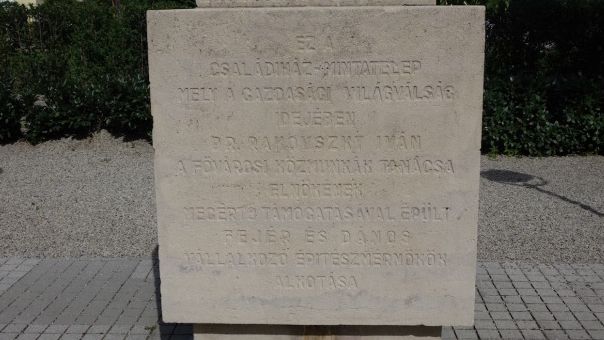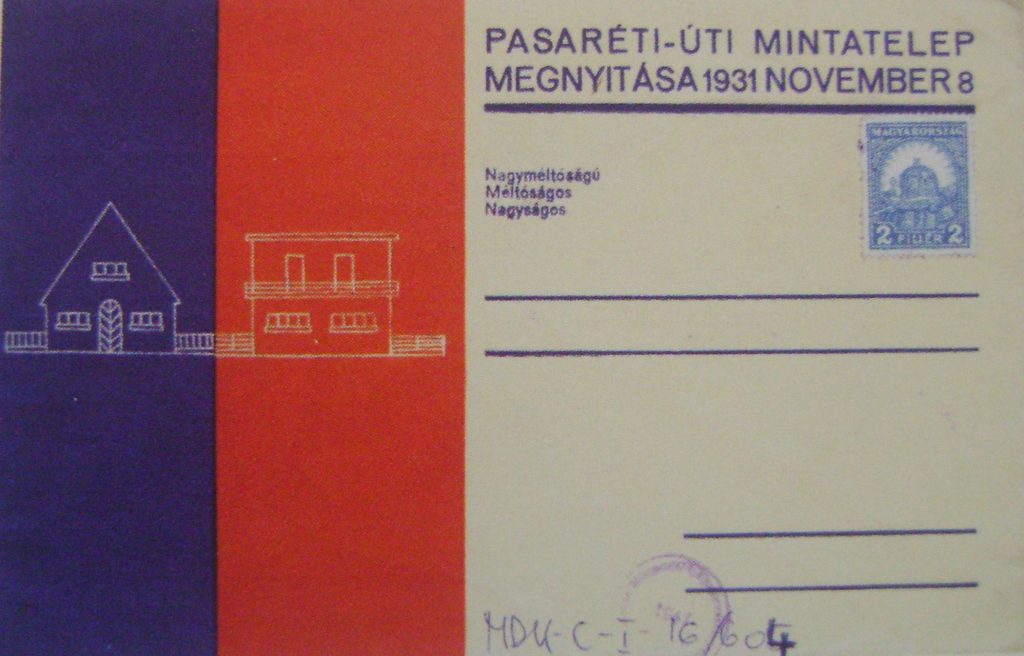Establishment of the housing estate
It became evident by the end of the 1920s that the housing problems of Budapest can only be solved by large-scale provisions based on radically new theories compared to the former practice. Alteration of prevalent construction rules and central regulation of housing programmes became necessary to advance the accommodation of socially vulnerable population and the opening of green areas for the middle-class. The prevalent rules didn’t make possible for citizens with lower income to build family houses at the periphery of Budapest. The benefits of uniform, colony-like construction became more and more apparent, like lower construction cost, more rationally built and operated public utilities, or more feasible use of building plots. (Anetta Pizág, Műemlékvédelmi Szemle, 1998/2 5-38)
These benefits and needs were recognized by some pioneers of the new architectural trend (Péter Kaffka, Lajos Kozma and László Vágó) who became the originators of the Napraforgó street housing estate and the initiators of its realisation. The idea to establish an experimental housing estate was presented by them in 1929, and they gained the construction firm Fejér and Dános over to bring it to effect. The owners of the firm, using their own resources, purchased the property no. 11489 at the peripheral part of Pasaréti street, beside the watercourse Ördögárok (formerly the horticulture of László Sz. Kocsis). Planning works were started and the first licensing plans were completed by May 1930. At its October 20 session the City Construction Committee made a motion to the mayor to issue the building license for the area. (To this order first a zoned reclassification had to be adjusted which decreased the minimal size of a building plot from 300 to 100 square meter – thus the cost of a family house with garden became equal with that of a 300 square meter vacant site.)

Map drawing of the land allocation in Napraforgó street
In the selection of the architects construction policy and tactical considerations also prevailed, thus older generation designers with a conservative vision but influence in contemporary public life (Gyula Wälder, Aladár Münnich, Andor Wellisch, Róbert K. Kertész) were also invited. The most modern buildings of the street were designed by young architects, Farkas Molnár, György Masirevich jr., József Fischer, who tried to introduce the spirit of Bauhaus, de Stijl (the Netherlands) and le Corbusier in Hungary. The other architects were close to the modern architectural trends.

Memorial at the central square in Napraforgó street
Construction work was started in February 1931. The first inhabitants moved in by August, and by November the whole housing estate became populated. The ceremonial inauguration of the estate was held on November 8, 1931 (http://super8.hu/home/index.html?tag_id=877).

Invitation to the inauguration ceremony
The origin of the street’s name (Napraforgó which means Sunflower) was explained by István Genthon in the periodical Napkelet in 1932: „The street got its name from the sunflower and this name is symbolic. The huge windows of the modern houses wait the vitalizing rays of the Sun coming from either direction – they are constructed to receive them. Sunlight and air, simplicity and cleanliness, practicality and resulting health are needed by today’s people.„ (István Genthon: Villas of the common men – Napraforgó street experimental housing estate, Napkelet, No. 1932/1., 71)
Different opinions regarding the housing estate were published in the press. For example, Antal Szerb the renowned Hungarian writer had the following vision of Napraforgó street in 1935:
„PASARÉT. There is no pasha. Some giant with very modern feeling
put small boxes along the tram line, then collected
some well-to-do Lilliputians and told them: Live here.
And they live there. They run by their small cars
to their small banks, those who live in the same box visit each other,
in the spring they praise each other’s small garden.
They are similar to people.”
(Antal Szerb: Budapest guide. For Martians. Budapest, 1935. 23.)
